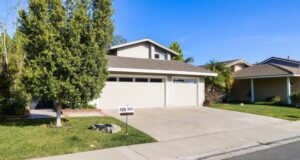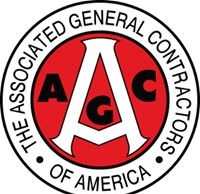USGBC Announces International Rankings of Top 10 Countries for LEED Green Building
Demand for sustainable buildings continues to grow throughout the globe
WASHINGTON, D.C. – July 22, 2015 – (RealEstateRama) — Today, the U.S. Green Building Council (USGBC) announced its international rankings of the Top 10 Countries for LEED, the world’s most widely used and recognized green building rating system. The Top 10 list highlights countries outside of the U.S. that are making significant strides in sustainable building design, construction and transformation, illustrating the ever-growing international demand for LEED green buildings. The announcement comes at a time of increased international focus on climate change mitigation in the lead up to the United Nation’s COP21 climate negotiations this December.
“International demand has grown steadily for tools supporting sustainable economic growth, and it has become increasingly clear that we are reaching a tipping point around environmental sustainability. It is now impossible to view social and economic development as separate issues from a robust sustainability agenda,” said Rick Fedrizzi, CEO and founding chair, USGBC. “The global success of LEED in these countries is a sign that international business leaders and policy makers recognize that a commitment to transforming the built environment is crucial to addressing major environmental challenges. The countries on this list are pushing this commitment forward.”
The 10 countries that made the list for 2015 are geographically and culturally diverse, representing seven of the world’s 20 largest single-nation economies by Gross Domestic Product (GDP) (China, Germany, Brazil, India, Canada, South Korea and Turkey), as well as six of the top 11 emitters of greenhouse gases (China, India, Germany, South Korea, Canada and Brazil). While Canada tops the list, Brazil and the Republic of Korea have moved up in the rankings and Turkey and Sweden are new to the Top 10 this year.
This is the second year that USGBC has provided rankings on the Top 10 Countries for LEED outside of the U.S. The analysis used to develop the list ranks countries in terms of gross square meters and numbers of LEED projects to date. LEED-certified spaces use less energy and water resources, save money for families, businesses and taxpayers, reduce carbon emissions and create a healthier environment for residents, workers and the larger community. The U.S., the birthplace of LEED, is not included in this list but remains the world’s largest market for LEED. The U.S. is the world’s largest economy by GDP as well as the world’s second largest emitter of greenhouse gases.
Every day, nearly 172,000 GSM of space is certified using LEED, and there are currently more than 69,800 commercial and institutional projects representing 1.23 billion GSM of space participating in the green building rating system. An additional 76,500 residential units have been certified under LEED for Homes. LEED projects can now be found in more than 150 countries and territories across the world.
Canada ranks number one on the list as the largest user of LEED outside of the U.S. with 26.63 million GSM of LEED space. There are now over 4,814 LEED-registered and LEED-certified projects representing 63.31 million GSM of LEED space in Canada. China (21.97 million GSM), India (13.24 million GSM) and Brazil (5.22 million GSM), three of the four BRIC economies, finished second through fourth on this year’s list, respectively. These three countries currently represent more than 33 percent of global greenhouse gas emissions, with China and India representing the largest source of projected growth in global emissions in the coming decades.
The Republic of Korea (4.81 million GSM) and Taiwan (3.84 million GSM) join China in providing a strong East Asian contingent to the 2015 rankings. Having two of the original tiger economies join China, India and Brazil on this year’s list demonstrates that LEED is taking hold in some of the world’s fastest growing economies, and that green buildings have enormous strategic value in terms of controlling emissions in countries that many climate watchers have noted hold the key to staving off the worst impacts of climate change.
Germany (4.01 million GSM) and Sweden (2.54 million GSM) represent Europe on this list, with Germany finishing sixth and Sweden making the list for the first time in 10th place. Both nations are routinely cited for their innovation and leadership in international efforts to reduce greenhouse gas emissions.
Middle Eastern countries, United Arab Emirates (3.13 million GSM) and Turkey (2.95 million GSM) have both had strong green building years. The UAE increased its total amount of LEED-certified space by 72 percent over last year, and climbed from ninth place overall in 2014 to eighth overall in 2015. Turkey made the Top 10 list for the first time in the nation’s history, finishing ninth overall.
The full ranking is as follows:
| Rank | Nation | GSM of LEED certified space (million) | Total GSM of LEED-certified and registered space (millions) | Total number of LEED-certified and registered projects |
| 1 | Canada | 26.63 | 63.31 | 4,814 |
| 2 | China | 21.97 | 118.34 | 2,022 |
| 3 | India | 13.24 | 73.51 | 1,883 |
| 4 | Brazil | 5.22 | 24.50 | 991 |
| 5 | Republic of Korea | 4.81 | 17.47 | 279 |
| 6 | Germany | 4.01 | 8.42 | 431 |
| 7 | Taiwan | 3.84 | 9.08 | 149 |
| 8 | United Arab Emirates | 3.13 | 53.44 | 910 |
| 9 | Turkey | 2.95 | 23.74 | 477 |
| 10 | Sweden | 2.54 | 4.20 | 197 |
| * | United States | 276.90 | 727.34 | 53,908 |
LEED’s international popularity is reflective of the exponential growth occurring within the global green building industry. Increasing consumer demand has pushed the world’s green building market to $260 billion in 2013, and this industry surge has led to a corresponding increase in the scope and size of the green building materials market, which is expected to reach $234 billion by 2019. Internationally renowned landmarks as diverse as the Empire State Building, the Maracanã Stadium and TAIPEI 101 are now LEED-certified spaces that illustrate the impact that sustainable construction and design are having on our shared culture.
At a time when the international community is looking to the UN’s negotiations in Paris as a historically significant chance to come up with real, binding solutions to climate change, the global popularity of LEED is a sign that a ‘green economic miracle’ is well within reach. LEED’s success demonstrates that there are proven, internationally credible solutions to some of the complex questions surrounding climate change mitigation that can help stimulate economic growth while also avoiding harmful economic disruptions. With buildings accounting for up to 30 percent of global emissions, a commitment to the rapid transformation of the global built environment seems to be one solution that the entire world can get behind.
As the creator of LEED, USGBC was honored as a winner of the United Nations’ top environmental accolade, the Champions of the Earth award, in November of 2014. In recognition of USGBC’s contribution to international sustainability efforts, UN Under-Secretary-General and UNEP Executive Director Achim Steiner called USGBC “a truly remarkable success story of community partnership where all sectors of society benefit through sustainable entrepreneurship—leading to improved quality of life for millions of people, while also making significant contributions to climate change mitigation.”
*The U.S. is not officially named to this list, but it remains the world’s largest market for green building
Marisa Long
Public Relations & Communications Director
U.S. Green Building Council















